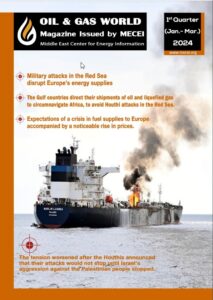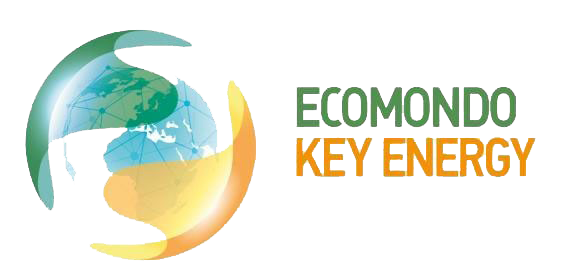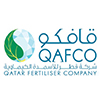- QatarEnergy selects Nakilat to own and operate 25 conventional LNG vessels
- The joint development of the Dorra field between Saudi Arabia and Kuwait is pending the demarcation of the border with Iran
- Minister of Energy reaffirms the UAE’s commitment to adopting clean energy and supporting the Paris Agreement
- The new Hassi Messaoud refinery enjoys the support of the government and President Tebboune
- Increasing electrical interconnection capacities to export electricity beyond borders
- Qatar Energy stops sending liquefied gas tankers through the Red Sea for security reasons
- The inauguration of the Duqm Refinery, the largest joint Gulf project in the refinery sector
- Saudi oil exports are faltering due to Houthi attacks on ships in the Red Sea and Gulf of Aden
- Algeria to host and chair the Gas Exporting Countries Forum summit (February 29 to March 2, 2024)
- Egypt Energy Conference and Exhibition 2024 gives a strong impetus to the global energy dialogue

Oil and Gas Situation in Kuwait

Oil and Gas Situation in Kuwait
Mohamad Hassan Salem
Chairman/ Middle East Center for Energy Information
General:
It is located in the northwestern corner of the Arabian Gulf, which borders it from the east while Iraq from the north and west and Saudi Arabia from the south. The total surface area of Kuwait is 17,818 km. Kuwait is a member of many international organizations including the League of Arab States, the Cooperation Council for the Arab Gulf States, the Organization of Islamic Conference, and the United Nations. Kuwait is divided administratively into six provinces which are: the capital, Al Jahraa, Hawalli, Farwaniya, Mubarak Al-Kabeer, and Al Ahmadi. Kuwait has nine islands in the Gulf namely: Bubiyan, Failaka, Warba, kibr, Oha, Om Al Maradim, Miskan and Qaruh.
In economic terms, Kuwait is one of the main oil producers and exporters in the world in addition to be an OPEC and OAPEC founding member, Kuwait has the fifth-largest oil reserves in the world ; it is the home of 10% of global oil reserves. The oil and its products account for nearly 95% of export earnings and 80% of government revenues. Kuwait is considered the most developed countries in the Arab League, and the fourth richest country per capita income.
Kuwait Oil and Gas Sectors
Kuwait adopts obvious grounds and instructions in its oil policies both at the local or international level, seeking the optimum exploitation of the available hydrocarbon energy sources. In addition, Kuwait is following an oil policy promoting the Kuwaiti petroleum position, maintaining its international prestige and weight and its leading role in the OPEC, and preserving its oil interests in proportion to its aimed current production capacity and oil reserves.
Kuwait seeks to consolidate oil cooperation relations with the outside world, and developing these relations in a way to achieve its oil and economic interests, whether bilaterally or through the active participation in regional and international petroleum organizations such as the Cooperation Council for Gulf Arab states through the permanent ministerial committee for petroleum cooperation and its sub-committees, the Organization of Arab Petroleum Exporting Countries (OAPEC) and its sub-Arab companies and the Organization of Petroleum Exporting Countries (OPEC). Kuwait plays a prominent role in the workings of ministerial OPEC conferences and its various committees. Kuwait is also participating actively in the meetings of the United Nations committees concerned with energy, environment and the meetings of the World Trade Organization.
Kuwait is setting out new priorities for upstream oil and gas development which could create new chances for international oil companies. The country’s new Strategy 2030 upstream plan still envisages an increase in oil production from 3.1 million b/d to 4 million b/d by 2020, but also calls for that capacity to be maintained out to 2030.
It is worth mentioning that the Oil Minister Sheikh “Ahmed Abdullah Al-Sabah” said that Kuwait plans to spend $ 87 billion on oil projects until 2030. The big changes from the previous upstream plan lie in where the incremental production will come from.
Oil:
According to Oil and Gas Journal, Kuwait’s territorial boundaries contain an estimated 104 billion barrels (bbl) of proven oil reserves, roughly 8 percent of the world total. The Neutral Zone, (Divided Zone), which Kuwait shares 50-50 with Saudi Arabia, holds an additional 5 billion bbl of reserves, bringing Kuwait’s total oil reserves to 109 billion bbl.
The Supreme Petroleum Council oversees Kuwait’s oil sector and sets oil policy. The Kuwait Petroleum Council (KPC) manages domestic and foreign oil investments. Kuwait Oil Company – KOC, nationalized in 1979, is Kuwait Petroleum Corporation – KPC’s upstream arm in Kuwait. The Kuwait Gulf Oil Company (KGOC), set up in 2002, oversees the bulk of Kuwait’s interests in the Neutral Zone. Most Kuwaiti crude oil is sold on term contracts, with the price of Kuwaiti crude oil tied to Saudi Arabian Medium (for western customers) and a monthly average of Dubai and Oman crudes (for Asian buyers).
Most of Kuwait’s oil reserves are located south of Kuwait City. The 70-billion bbl Greater Burgan area, which comprises the Burgan, Magwa and Ahmadi fields, is widely considered the world’s second largest oil field, surpassed only by Saudi Arabia’s Ghawar field. Producing oil since the 1950’s, Greater Burgan generally produces lighter crudes with API’s in the 28°-36° range, and has a production capacity of 1.6 million bbl/d.
The South Magwa field (discovered in 1984) is estimated to hold at least 25 billion bbl of light crude. Other fields surrounding the Greater Burgan area include Umm Gudair, Minagish, and Abdaliya. Umm Gudair and Minagish produce heavier crude oil, with gravities in the 22°-26° API range, and have a combined production capacity of 200,000 bbl per day.
In January 2003, water injection began at Minagish to offset declines in production. Northern Kuwait holds the majority of Kuwait’s larger fields after Greater Burgan. Kuwait’s second largest field, Raudhatain, was discovered in 1955 by KOC, and has 9.55 billion bbl of proven and probable recoverable oil. Raudhatain has the capacity to produce 450,000 bbl of oil per day.
Neutral Zone
The Neutral Zone (NZ) was established in 1922 to settle a territorial dispute between Kuwait and Saudi Arabia. The NZ encompasses a 6,200 square-mile area and contains an estimated 5 billion bbl of oil and 1 trillion cubic feet (Tcf) of natural gas. A Joint Operations Committee, with representatives from both Kuwait and Saudi Arabia, manages the resources in the NZ. Kuwait is represented by the Wafra Joint Operations Group, and Saudi Arabia is represented by Chevron. Oil production capacity in the NZ is currently about 600,000 barrels per day, all of which is divided equally between Saudi Arabia and Kuwait.
Onshore production in the NZ centers on Wafra. On stream since 1954, Wafra is the largest of the NZ’s onshore fields with approximately 3.4 billion in proven and probable reserves. Wafra has related production facilities and gathering centers with South Umm Gudair and South Fuwaris. Onshore production in the NZ has a capacity of around 274,000 bbl/d.
The production capacity of offshore fields in the NZ is 300,000 bbl/d, with almost 90 percent coming from Khafji. Offshore production is about four times as expensive in the NZ as in the rest of Kuwait. Khafji, an extension of Saudi Arabia’s Safaniyah (the world’s largest offshore field), Hout, also an extension of Safaniyah, and Dorra, an extension of Iran’s Arash, are the largest fields. Dorra is not currently under production pending resolution of boundary demarcation negotiations between Kuwait and Iran.
Kuwait holds equity interests in oil production in 14 countries through the Kuwait Foreign Petroleum Exploration Company (KUFPEC), established in 1981. KUFPEC is active in Australia, Indonesia, Tunisia, Egypt, and other countries.
Production
Kuwait produces approximately 2.7 million barrels per day (bbl/d) of oil, which includes about 300,000 bbl/d of production from the Neutral Zone. Of this production, 2.57 million bbl/d was crude and 170,000 bbl/d was non-crude liquids. Overall, around two-thirds of Kuwaiti oil production comes from the southeast of the country. Most of Kuwait’s major producing fields are over sixty years old, and therefore field maturity is becoming a concern. In 2005, KOC, citing field exhaustion, lowered its production plateau estimates for the Greater Burgan area from 2 million bbl/d to 1.7 million bbl/d over a 20-30 year period. This issue places added significance on development of other Kuwaiti reserves going forward.
Oil Production capacity
Kuwait owns about 10% of oil reserves in the world, with current oil production capacity of about 3.15 million b/d (2.85 million b/d from the Kuwaiti Oil Company and the rest is about 280 thousand b/d from the Neutral Zone). Kuwait plans to increase its current production capacity to four million barrels of oil per day by 2020 through exploiting heavy oil fields, and promoting production within the neutral zone shared with Saudi Arabia. It should be noted that the productive capacity of four million b/d by 2020 will include 3.65 million b/d of the Kuwaiti Oil Company production, and the rest comes from the Neutral Zone
Sami Al-Rasheed, the Chairman and Deputed Member of Kuwait Oil Company, the governmental company responsible for exploration and production, said: “Kuwait has large production capacity surplus, and Burgan field, by its productive capacity of 1.7 million b/d which is considered the second largest oil field in the world after El Ghawar field in Saudi Arabia), preoccupies more than half of the production capacity in Kuwait; the company would raise its production capacities to more than three million b/d in 2010, and it also plans to allow oil major international companies to assist in heavy oil production and free (non-associated) natural gas extraction, which was discovered for the first time in 2006”.
As for producing heavy oil from the northern fields, the company relies mainly on its own expertise in this area. According to the statements of the Deputy accredited member Hashim Hashim of the company, the productive capacity of these fields ranges between 650 thousand and 800 thousand b/d. The company is trying to raise the heavy oil production in the northern fields to 900 thousand barrels per day by 2012.
Kuwait’s constitution, and longtime policy, bars foreign investment in the country’s natural resources, except as provided for by law. In order to allow IOC involvement, “incentives buyback contract” (IBBC) arrangements, which do not involve production sharing, concessions, or the “booking” of reserves by foreign companies, have been created. The structure of the IBBC agreements allows the Kuwaiti government to retain full ownership of oil reserves, control over oil production levels, and strategic management of the ventures. Foreign firms are to be paid a “per barrel” fee, along with allowances for capital recovery and incentive fees for increasing reserves, in their role as service contractor.
Project of Kuwait –PK – aims to increase the country’s oil production capacity from four northern oil fields – Raudhatain, Sabriya, Ratqa, and Abdali – to 3.5 million bbl/d by 2015, and then 4 million bbl/d by 2020 with the help of international oil companies (IOC).
Heavy oil is a major component of Kuwait’s increased production capacity plans. Estimated heavy oil reserves of approximately 13 billion bbl are located primarily in the north of Kuwait. KOC also plans to drill for oil in South East Kuwait and West Kuwait. In South East Kuwait, which holds the vast Burgan field, production is to increase by 200,000 b/d to a total of 1.7 million bbl/d; KOC hopes to maintain capacity in West Kuwait at 500,000 b/d.
Exports
Kuwait’s total exports of crude and refined products reached nearly 2.7 million bbl/d. The Asia- Pacific region received 1.3 million bbl/d, the United States received 175,000 bbl/d, and Western Europe received 109,000 bbl/d. Of the 739,000 bbl/d of refined products, roughly 584,000 bbl/d were exported; Asia-Pacific countries received 480,000 bbl/d and Western Europe received 236,700 bbl/d. Kuwait’s single export blend (Kuwait Export) has a specific gravity of 31.4°API (a typical medium Mideast crude), and is considered sour with 2.52 percent sulfur content. Mina al-Ahmadi is the country’s main port for the export of crude oil. Kuwait also has operational oil export terminals at Mina Abdullah, Shuaiba, and at Mina Saud. A new terminal is planned for construction on Bubiyan Island.
Downstream Operations
Kuwait’s three domestic refineries have a combined capacity of roughly 936,000 bbl/d. The country’s largest refinery is Mina al-Ahmadi, with capacity of 466,000 bbl/d, followed by Mina Abdullah (270,000 bbl/d) and Shuaiba (200,000 bbl/d). Kuwait’s total oil consumption reached 325,000 bbl/d.
Kuwait Petroleum International (KPI – Q8) manages KPC’s refining and marketing operations internationally, with approximately 4,000 retail stations across Western Europe (Belgium, Spain, Sweden, Luxembourg, and Italy). KPI owns an 80,000 bbl/d refinery in Rotterdam, Netherlands and has a 50/50 joint venture with AGIP in the 240,000 bbl/d capacity refinery in Milazzo, Italy.
With the growth of downstream markets in Asia, Kuwait has been keenly interested in acquiring downstream assets in large emerging markets such as China and India. In March 2008, KPI, Royal Dutch Shell, and China’s Sinochem announced a deal to build a 240,000 bbl/d refinery in Fujian Province in China. The refinery is designed to process Kuwaiti heavy crude. Also, in China’s Guangdong Province, KPC was interested in a partnership with China’s Sinopec and Dow Chemical Company in a project costs $5 billion. The plant will feature a 300,000 bbl/d capacity refinery and 1 million tons per year of ethylene steam cracker.
Clean Fuels Project
The Clean Fuels Project (CFP) is the umbrella under which Kuwait’s existing refineries will be upgraded. With a 2008 price tag of $18 billion, the CFP is split into three packages. In Package 1, Mina Abdullah’s distillation capacity will be increased to 420,000 bbl/d. Package 2 will consist of revamping Mina Abdullah’s utilities both on and offsite. Package 3 will restore and repair necessary elements of Mina Al-Ahmadi.
Natural Gas
Kuwait holds a modest amount of natural gas reserves but hopes to significantly increase its use of domestic and imported natural gas in electricity generation and other sectors to free up additional oil for export.
Kuwait’s estimated natural gas reserves stood at nearly 63 trillion cubic feet (Tcf). Kuwait produces a relatively modest volume of dry natural gas, an estimated 450 billion cf (Bcf) in 2006, the vast majority of which is “associated gas” (i.e., found and produced in conjunction with oil).
KOC plans to increase its production of non-associated gas from the currently 140 million cubic feet per day to 600 million cubic feet per day by 2012, then to one billion cubic feet per day by 2015, in addition to the current Kuwaiti production of associated gas which now reaches one billion cubic feet per day.
Gas Production
Kuwait seeks to significantly increase its use of natural gas in electricity generation, water desalination, and petrochemicals to free up as much as 100,000 barrels per day of oil for export. Kuwait hopes to accomplish this through increased drilling for natural gas, and tying together gathering centers to create the infrastructure necessary to reduce associated gas flaring.
In 2005, an estimated 35 Tcf of non-associated gas was discovered in several fields near Sabriya and Umm Niga in northern Kuwait. In the summer of 2008, Kuwait began production of approximately 175 million cf per day, planned to rise to nearly 1 Bcf per day by 2015. The new production is not expected to cover Kuwait’s rising demand.
As with oil, negotiations continue between Kuwait and Iran regarding the disputed Dorra offshore natural gas field and any development requires resolution of demarcation issues. The Dorra field has been claimed by Saudi Arabia, Kuwait, and Iran, and may contain up to 11 Tcf of recoverable natural gas reserves. Although on an annual basis natural gas consumption matches production, in recent years, Kuwait’s electricity demand, the generation of which is fueled by natural gas, has outpaced natural gas production during the summer months, resulting in the shutdown of refinery and petrochemical operations to meet the increased demand in electricity.
In March 2009, Kuwait and Qatar signed an agreement whereby Kuwait would import nearly 67 Bcf of liquefied natural gas each summer for 5 years, beginning in June 2009. Besides Qatar, Kuwait seeks to import natural gas from Iran, most likely from its huge South Pars gas field. Iran and Kuwait signed a preliminary memorandum of understanding for natural gas sales in March 2005, but commerce requires the resolution of maritime border issues in the region, specifically with regards to Dorra.
New Discoveries
Within the efforts aiming at discovering more fields to enhance its crude production by about 27% to reach four million barrels of oil per day by 2020, Kuwait has discovered a new oil and gas field located north-west of Kuwait and its initial daily production capacity is estimated of about 80 thousand barrels of light crude and 110 million cubic feet of gas. As stated by Sami Al-Rasheed, the Chairman and Deputed Member in Kuwait Oil Company, the governmental company responsible for exploration and production, he said that the company is drilling evaluation wells for this discovery.









